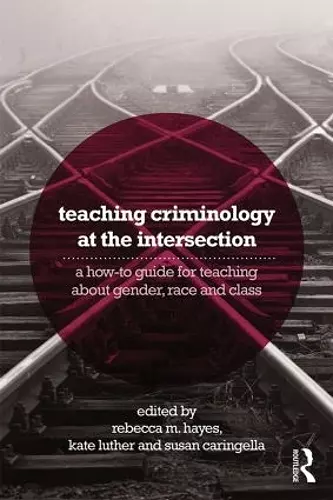Teaching Criminology at the Intersection
A how-to guide for teaching about gender, race, class and sexuality
Rebecca Hayes editor Susan Caringella editor Kate Luther editor
Format:Paperback
Publisher:Taylor & Francis Ltd
Published:8th Aug '14
Currently unavailable, and unfortunately no date known when it will be back
This paperback is available in another edition too:
- Hardback£140.00(9780415856379)

Teaching about gender, race, social class and sexuality in criminal justice and criminology classrooms can be challenging. Professors may face resistance when they ask students to examine how gender impacts victimization, how race affects interactions with the police, how socioeconomic status shapes experiences in court or how sexuality influences treatment in the criminal justice system. Teaching Criminology at the Intersection is an instructional guide to support faculty as they navigate teaching these topics.
Bringing together the experience and knowledge of expert scholars, this book provides time-strapped academics with an accessible how-to guide for the classroom, where the dynamics and discrimination of gender, race, class and sexuality demographics intersect and permeate criminal justice concerns. In the book, the authors of each chapter discuss how they teach a particular contemporary criminal justice issue and provide their suggestions for best practice, while grounding their ideas in pedagogical theory. Chapters end with a toolkit of recommended activities, assignments, films, readings or websites.
As a teaching handbook, Teaching Criminology at the Intersection is appropriate reading for graduate level criminology, criminal justice and women’s and gender studies teaching instruction courses and as background reading and reference for instructors in these disciplines.
‘Teaching Criminology at the Intersection is something every faculty member needs who is struggling with how to address issues of inequality and discrimination to resistant or simply unknowledgeable students. The contributors use various techniques, such as drawing an analogy between inaccurate perceptions of American Pit Bull Terriers and racist beliefs about people of color, effective use of assignments and outside speakers, and classroom exercises to impart knowledge in a non-threatening and often experiential manner.
In her groundbreaking chapter, Emily Lenning introduces students to the experiences of LGBTQ persons by having them imagine being heterosexual in a homosexist world. This book should be on the shelf of everyone who cares about teaching.’
Susan F. Sharp, David Ross Boyd Professor/Presidential Professor, University of Oklahoma, USA
‘It is vitally important that instructors teaching criminal justice broach the topic of diversity and its relationship to crime and criminal justice issues; however, incorporating material on race, ethnicity, gender, class, and sexual orientation can be a daunting task. Some of the most important topics to cover are the most sensitive, and instructors risk alienating students if the material is not approached carefully. This important book provides instructors with tools to tackle difficult issues and adequately address how diversity shapes human behavior, and encourages students to self-reflect on their own behavior and experiences.’
Christina DeJong, Director, Center for Integrative Studies in Social Science and Associate Professor, School of Criminal Justice, Michigan State University, USA
‘In their scrupulous consideration of the compelling effects of gender, race, class, and sexuality within criminology, the contributors of this volume have identified a missing link in the instruction of criminological courses.
This volume provides concrete illustrations for criminology educators to follow and promotes creative formulation of sound methods for educating from a critical and inclusivity standpoint. This volume is a necessity in every criminologist’s teaching toolbox.’
Hillary Potter, Associate Professor, Department of Ethnic Studies, University of Colorado at Boulder, USA
ISBN: 9780415856386
Dimensions: unknown
Weight: 158g
148 pages